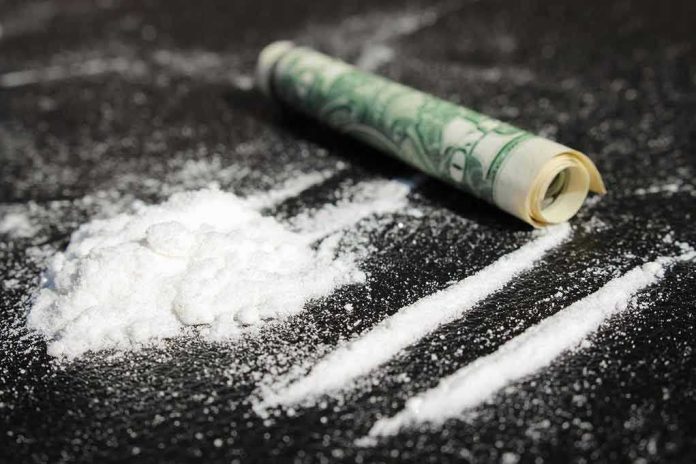
Baltimore’s drug crisis escalates as five more are hospitalized following another wave of overdoses, leaving residents and officials scrambling for solutions.
At a Glance
- Five people were hospitalized in Baltimore due to overdoses on July 18, 2025.
- Recent drug samples were found to contain a dangerous mix of fentanyl and N-Methylclonazepam.
- Community advocates urge increased distribution of Narcan and harm reduction strategies.
- Authorities continue to investigate the source of the contaminated drug supply.
Baltimore’s Ongoing Drug Crisis
Baltimore’s opioid epidemic shows no signs of slowing, with the latest incident on July 18, 2025, where five individuals were hospitalized after overdoses in the Penn North neighborhood. This comes just days after a mass overdose event on July 10 that sent 27 people to hospitals, raising alarms throughout the city. The neighborhood, historically plagued by neglect and systemic disenfranchisement, remains at the heart of this crisis.
The opioid crisis in Baltimore is not a new phenomenon. The city has been grappling with the scourge of fentanyl and other synthetic opioids for over a decade. Despite a reported 25% drop in overdose deaths in 2024, the threat remains pervasive. The latest overdoses highlight the dangerous unpredictability of the city’s drug supply, compounded by poverty, limited healthcare access, and high trauma rates in areas like Penn North.
Escalating Concerns
Authorities have identified a perilous mix of fentanyl and N-Methylclonazepam in recent drug samples, raising the stakes for users and emergency responders alike. This deadly combination complicates overdose scenarios, making emergency interventions even more critical. With two of the recent victims in serious condition and two refusing further treatment after Narcan administration, the urgency for action is undeniable.
The Baltimore Police Department has made arrests related to drug distribution near the site of the July 10 overdoses. However, a direct link to the mass overdose event is still unconfirmed, leaving a cloud of uncertainty over the investigation. Meanwhile, Mayor Brandon Scott has underlined the importance of community intervention, urging residents to carry and use Narcan, a life-saving overdose reversal medication.
Community and Government Response
Efforts to combat the crisis are ramping up, with the Office of Overdose Response and community partners intensifying outreach. Narcan and test strips are being distributed more widely, and information on treatment resources is being made more accessible. Yet, these measures, while critical, are reactive and underscore a broader need for systemic change.
Critics argue that Baltimore’s current predicament is a predictable outcome of years of underinvestment in addiction treatment and mental health services. As the city grapples with this public health emergency, calls for a shift from punitive measures to harm reduction and public health approaches are gaining traction. The debate continues over the best path forward, with policymakers, law enforcement, and public health advocates often at odds.
The Broader Implications
The implications of Baltimore’s drug crisis extend beyond the immediate community, highlighting the dangers of an unregulated and unpredictable illicit drug market. Economically, the toll includes emergency response costs, hospitalizations, and lost productivity. Socially, the crisis exacerbates community trauma and stigma, further marginalizing already vulnerable populations.
Politically, the crisis could drive significant debate over drug policy, public health funding, and addressing systemic inequities. The lessons from Baltimore’s struggle resonate nationwide, prompting a reevaluation of public health strategies and the urgent need for comprehensive solutions.







